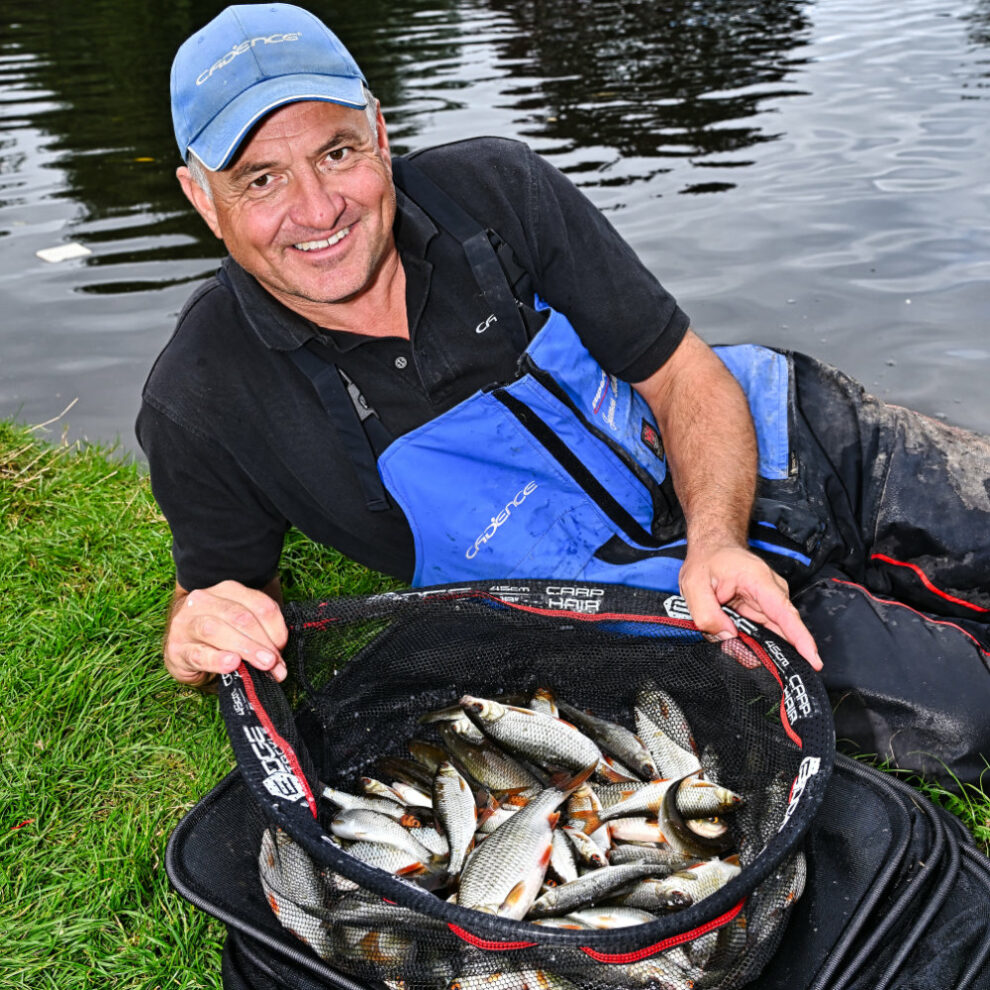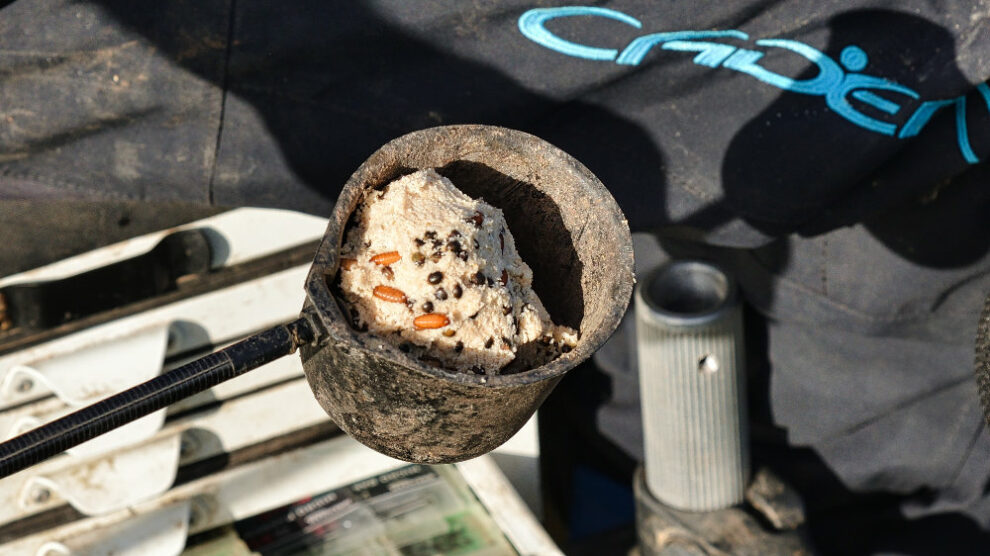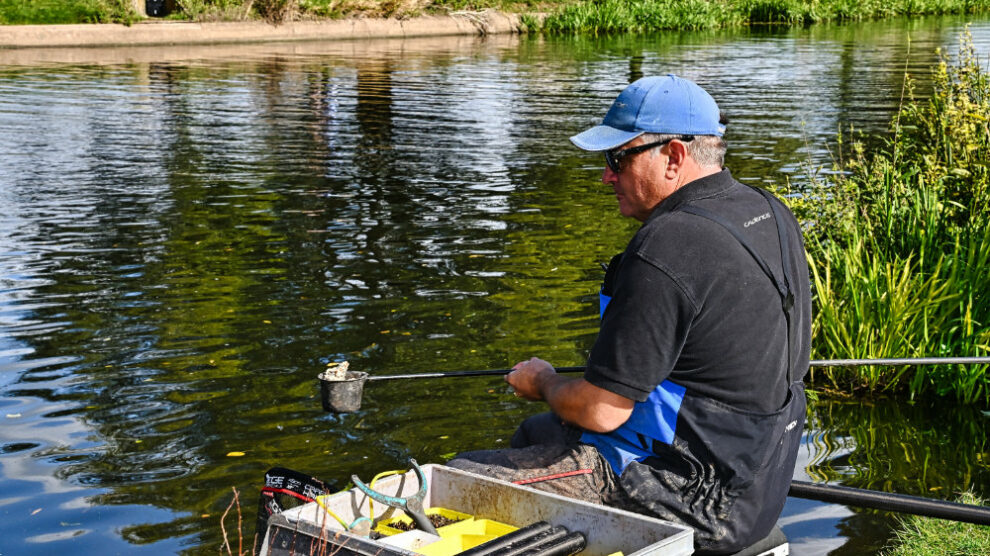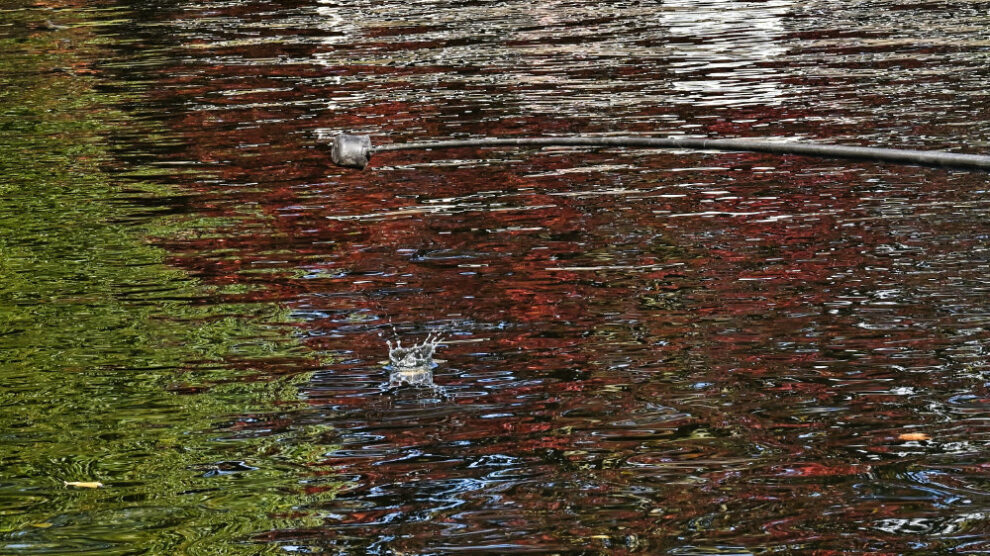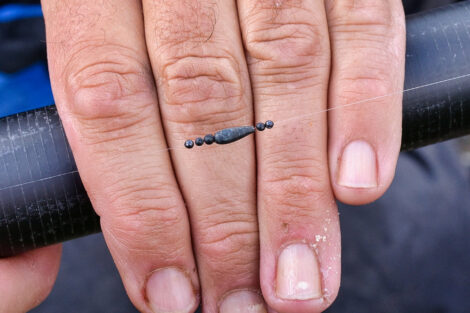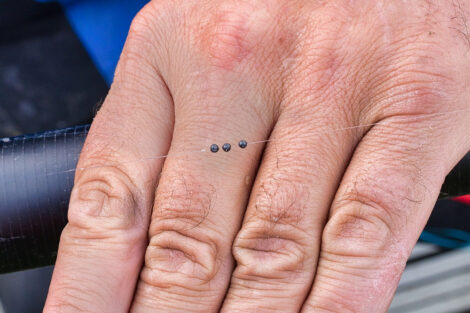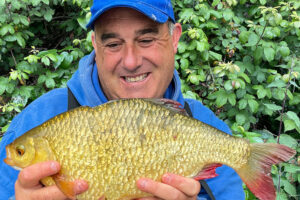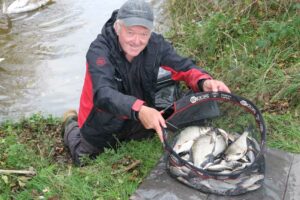Over the last 15 years, bread punch fishing has become a key method for me when targeting river venues like the Warwickshire Avon. Initially, I remember starting to use bread punch on the Avon in low, clear and cold conditions in the winter. When conditions are tough like this, it’s often the only way to catch fish, such as shy roach on the Avon, mainly with the long pole.
I remember practicing with my great friend and teammate Rob Middleton and really refining the method for an upcoming winter league at Evesham. That day we fished on the Whitehouse Bend (around peg 45 and 47) on the ferry, I remember watching Rob and then fishing punch for the first time at Evesham. The river was low with frosty conditions and I remember the match the previous weekend had seen many dry nets in that area. We wanted to work out a way to avoid a blank, and bread punch was the answer. We both caught well in that practice, and it helped our team to win the winter league that year, it soon became our main winter method.
In recent times I find myself starting on bread on numerous venues like Evesham on the Avon throughout the season. I like the bait because it’s a quick starting method and one that combines well with other baits as the match progresses, such as hemp, casters, or maggots. Predominantly bread punch is a bait to target roach, but it’s also great for catching bonus fish like chub, skimmers, and bream.
To prove this, I’ve had some great results at Evesham in the last few seasons by fishing bread punch in the summer.
On opening day this season I drew peg six on the town (yes it is flyer). I started on bread and caught roach initially and some puppy chub up to 8oz. I fed casters with the bread as well as loose feeding them and managed to catch a good stamp of roach and chub on casters or bread all day, finishing with 18lb and winning the match.
I also used the same method again with loose feeding casters in the Evesham final this year and managed to win 14lb from peg 36 on the Isbourne (another flyer!)
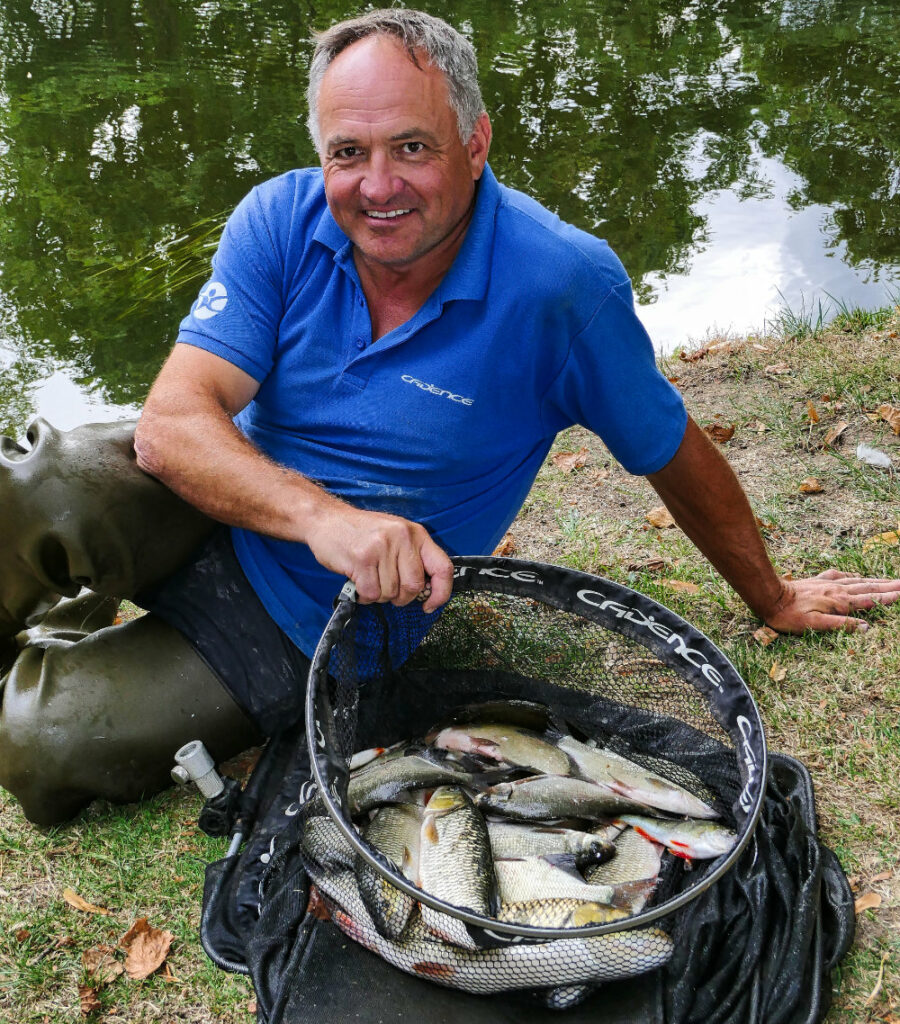
I find bread punch fishes best on river venues that receive a lot of bread from people feeding the ducks, swans, and geese. Often venues that are in town centres like Evesham, Stratford, or Warwick respond best to bread punch and I believe that links directly to this fact, bread has become a great food source for the fish!
Today I brought Chappy and his cameras down to the Avon in Warwick to try to explain in more detail about this method. I’ve selected a peg on the Warwick and District AA waters at Myton road. It’s a lovely venue and one I’ve done well with bread punch over the years. I don’t believe it’s a coincidence that it receives a lot of bread feed from the public.

Starting on bread gives you a great insight into how your match is likely to go, if a roach is in your peg, I recon you catch them!
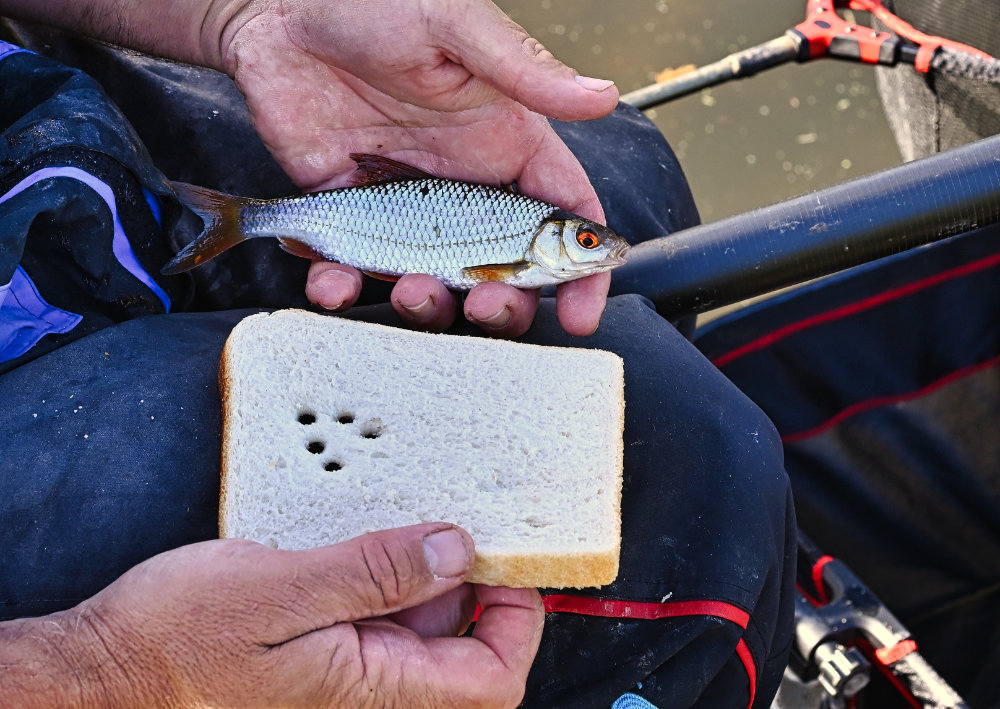
Today, as on most matches, I’m starting by feeding two balls of bread feed on the pole at 13m. I make two balls about the size of a tangerine, one is squeezed quite hard and the other half squeezed. My thinking is the harder ball will sink to the bottom and break down there. The other will sink slower to the bottom, rather like a comet through the water, and help attract fish onto the line I’m fishing.
Apart from days when I’m fishing really deep or powerful pegs on rivers like the Trent, I don’t tend to add anything to the bread to make it sink (like gravel or stones). I actually want the bread to be fed in a general area rather than trying to pin it down in one spot. My view is this helps to attract more fish into the feed area, but also allows me to catch them more quietly and carefully from the swim.
Today the river is low and not very pacey at all. I’m fishing at 13m as this is where the flow starts to pick up, and may also fish 14.5m with my Cadence CP1000 pole on pegs with minimal flow. On pegs with more flow then I’ll often fish the bread closer between 8 and 11m.
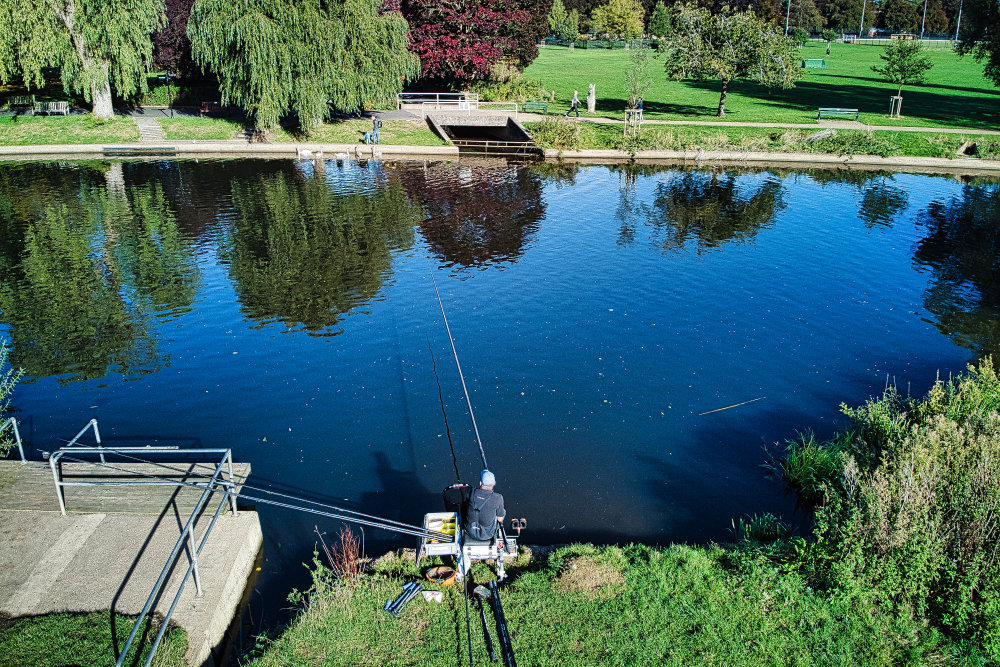
Feed
The bread feed I use couldn’t be simpler, I use fine white crumb. My preference is the white bread crumb from Lanes in Coventry. It’s made from pure bread and smells great! In the winter on tough days I’ll sieve this bread through a fine flower sieve to reduce the food content. However, I don’t think this is necessary in the Autumn, and I’m actually adding some hemp and a few casters into the balls to increase the feed content. I like doing this in good conditions and better venues as it gives me options to fish other hooks baits as well as bread.
I like to mix the bread feed in bulk quantities (say 10 pints +). Once I’ve mixed the bread, I freeze it in two pint batches, and that’s normally enough for one session. I also think that freezing the bread makes it better to fish with, as it’s thoroughly and consistently mixed. Often all that’s needed is a quick riddle and a slight dampen from the atomiser, and it’s ready to go, this saves a lot of time and hassle mixing on the bank. It’s important to mix in the water gradually and carefully; otherwise it will become very stodgy. I like to mix the bread in a big groundbait bucket and add the water via an atomiser.
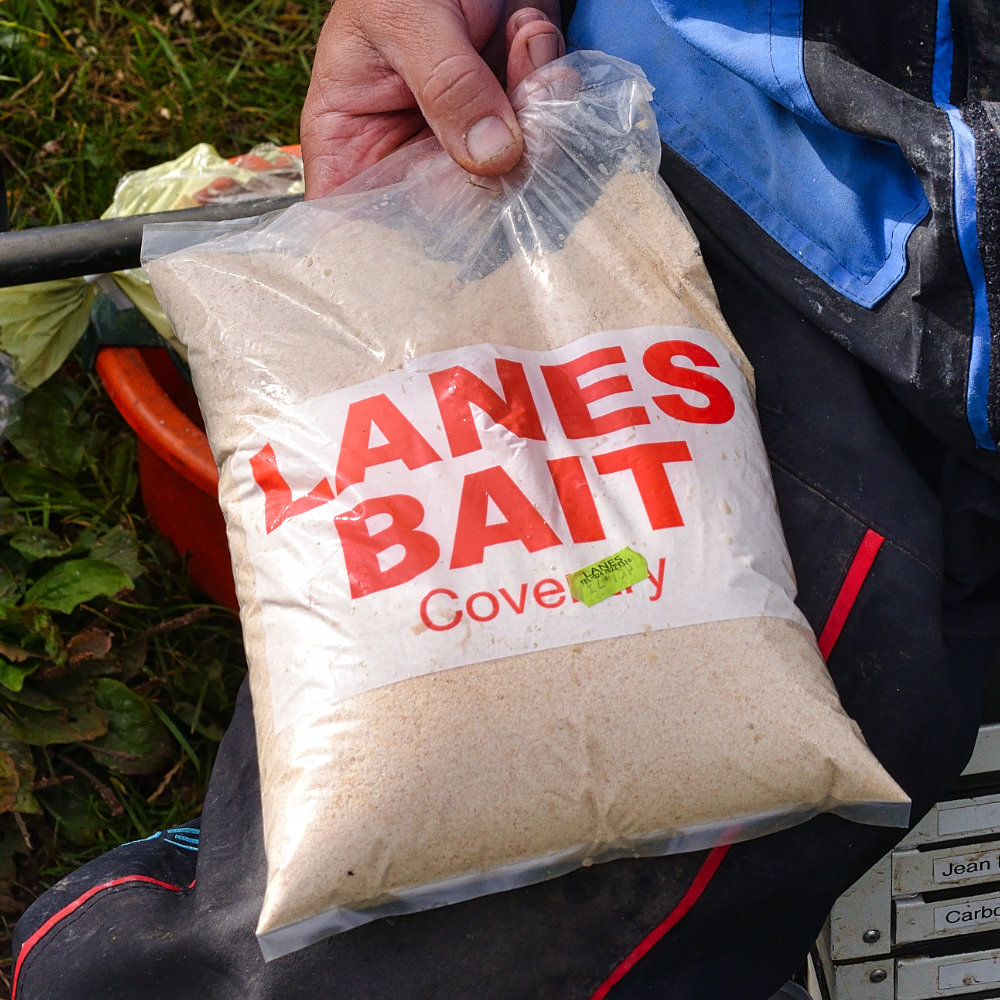
I keep the bread feed covered up when I’m fishing, as I want to keep it as fresh as possible. I just keep it in the tubs I freeze it in and leave the lid on, that way it’s not susceptible to drying out or getting wet if it’s raining.
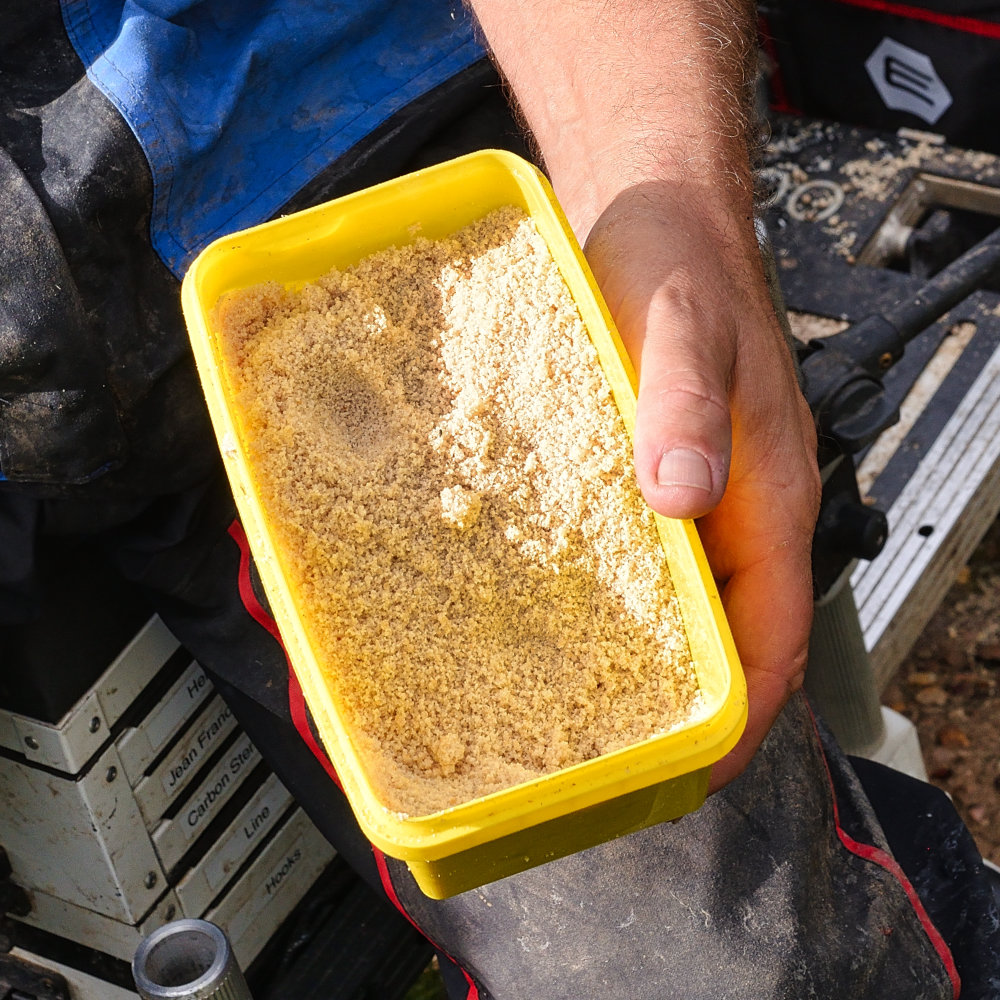
Bread for Hook
For the bread punch, I like to use fresh white bread in medium or thick sliced loaves. I don’t prepare the slices in any way (like steaming or rolling). Generally, I find the fresh white bread will stay on the hook long enough when I’m shipping out the rig and when placing it in the water.
I find that rolling or compressing the bread punch into a harder pellet is not as attractive to the fish. Often, bites only come when the bread punch has absorbed some water and is soft again. So, the fact the punch doesn’t stay on the hook as long is countered with the fact I’m getting bites quicker and typically a better stamp of fish.
The key point about this is that the bread must be fresh and kept covered up. I like to take one slice out at a time and keep the loaf covered up and out of the sun. The slice I’m using is kept in the top draw of my Octbox, so I can keep it covered whilst I’m fishing but access it quickly and easily to punch. The hard base to the draw also helps form a consistent punch.
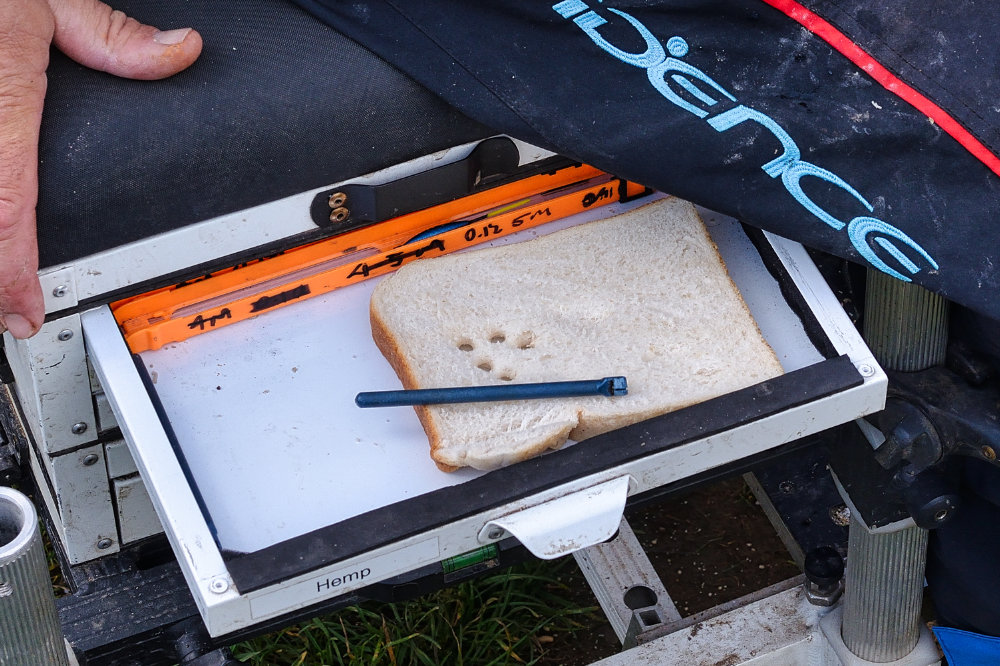
For the bread punches, I’m a big fan of the old Drennan bread punches. They have a great range of sizes and also have a nice deep punch that does not compress the bread too much. Also being made from plastic, I don’t think it blunts the hook in use, something brass or metal punches can do.
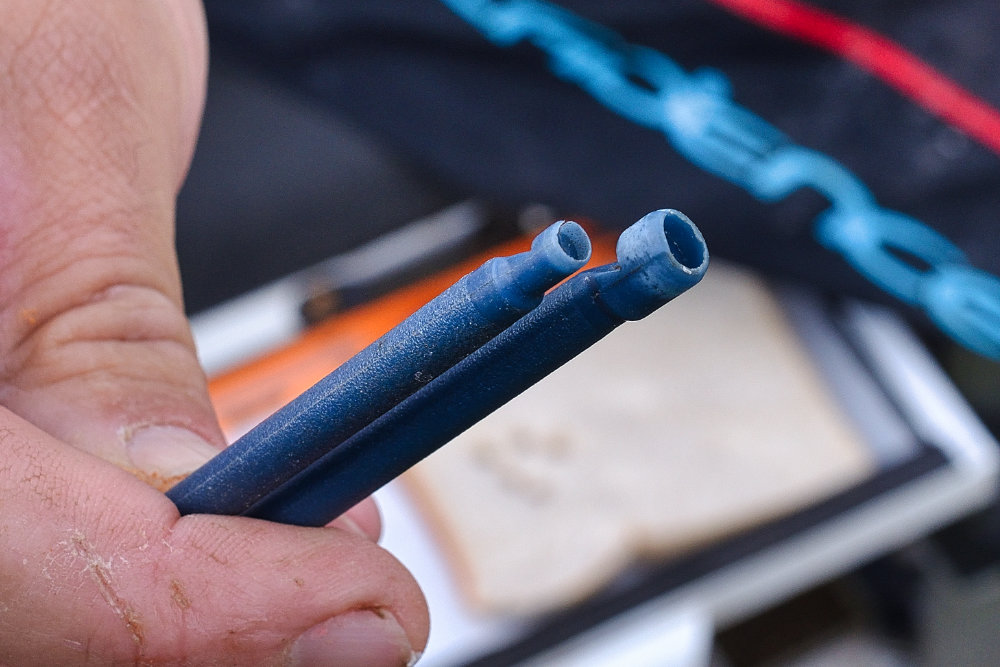
My favourite size punch is the biggest 10mm version, and this may seem surprising! On tough days or when catching small roach, I will consider using a smaller punch. However, typically, I like using the big punch. I recon it helps target bigger roach and also bonus fish like skimmers and chub.
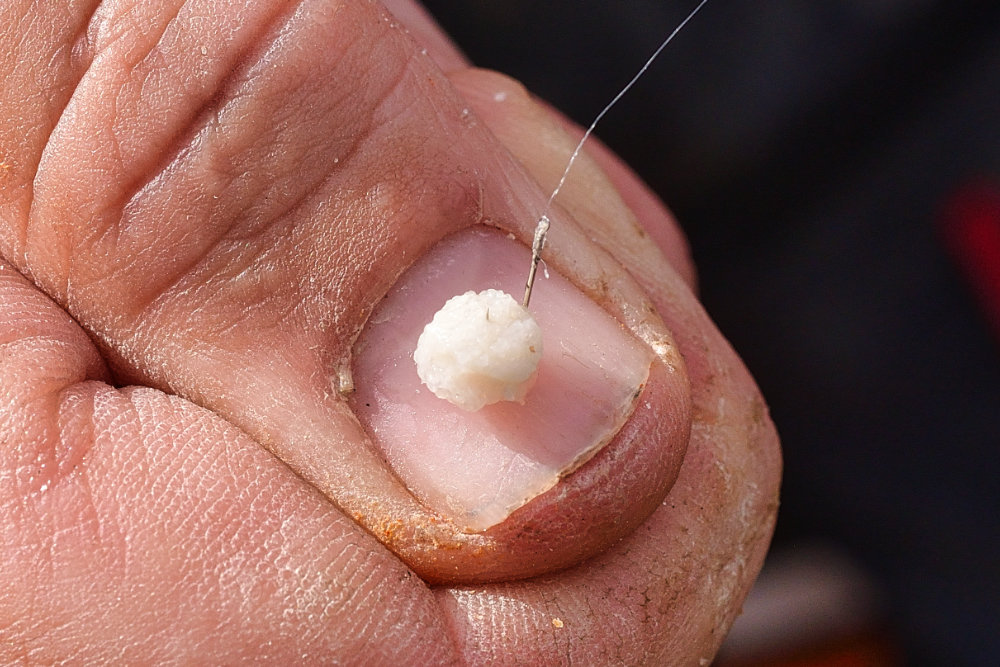
Rigs
The rigs I use are simple and positive in shotting. For nearly all my punch fishing on rivers, I like to use an olivette and double bulk dropper.
As bread punch is buoyant, I think this type of rig and presentation is critical. In this case, the double bulk is made by grouping 3 x #10 shot together. It makes the rig positive and quick, but also helps to register bites better.
Typically, the bulk or olivette will be between 20 to 40cm from the hook. On harder days, I’ll move the bulk higher up the rig and also spread out the dropper shots. I like to use shorter (6cm) hooklengths than normal, so I can get the dropper shot closer to the hook.
Floats
I like the Sensas Jean Francois and use them in sizes from 0.5g up to 3g depending on the depth and power of the water. The shape of the body and wire stem allows great control when edging the float through the swim or when running it through. I also like the diameter of the fibre tip and find I can see and read the bites easily.
Compared to using other baits like maggots or casters I tend to use slightly bigger floats for the bread, as mentioned a more positive rig will help when bread fishing with both presentation and control of the rig.
The peg I’m fishing today is about 8ft deep and a 1.5g float is perfect.
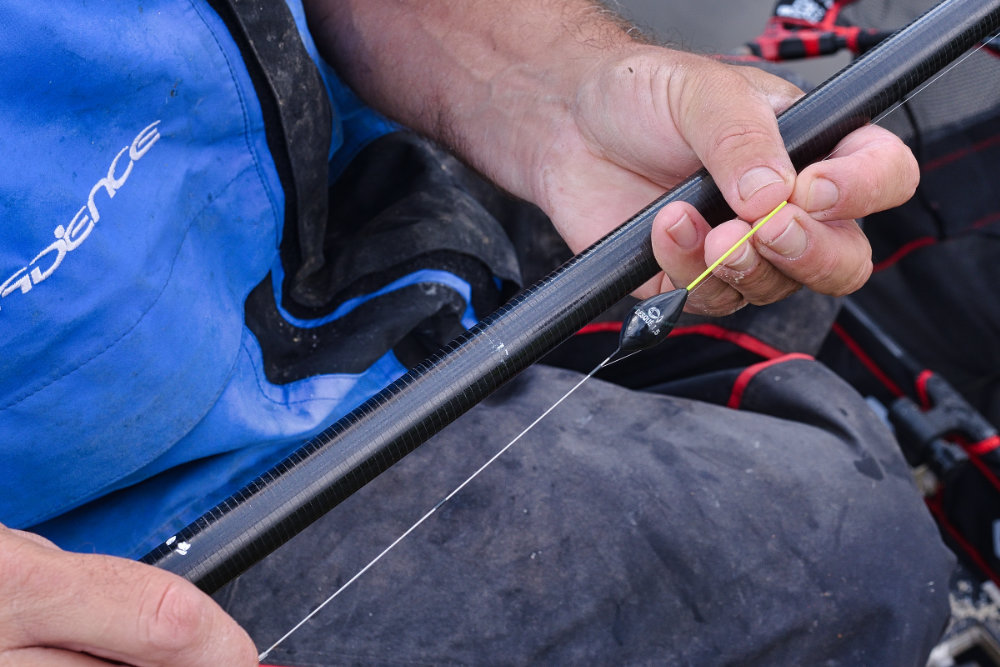
Lines
I like to fish fine rigs when fishing rivers like the Avon. As a general statement, I think many anglers have got used to fishing heavier line on rigs on other venues and have lost the finesse needed to fool roach and chub on tough venues like Evesham.
The mainline I use is 0.10 mm and over the last 12 months I’ve been testing a new line from Edge Tackle. It’s called Edge Tackle Premium Mono and is very accurate and reliable.
Hooklengths will vary from 0.06mm up to 0.09mm. I’m a big fan of Fluorocarbon for my hooklengths and really believe it makes a difference, especially in clear water. Again I’ve been involved with testing and using the 100% Fluorocarbon from Edge Tackle, it’s excellent. Today I’m using the 0.07mm Edge Tackle Fluorocarbon Pure.
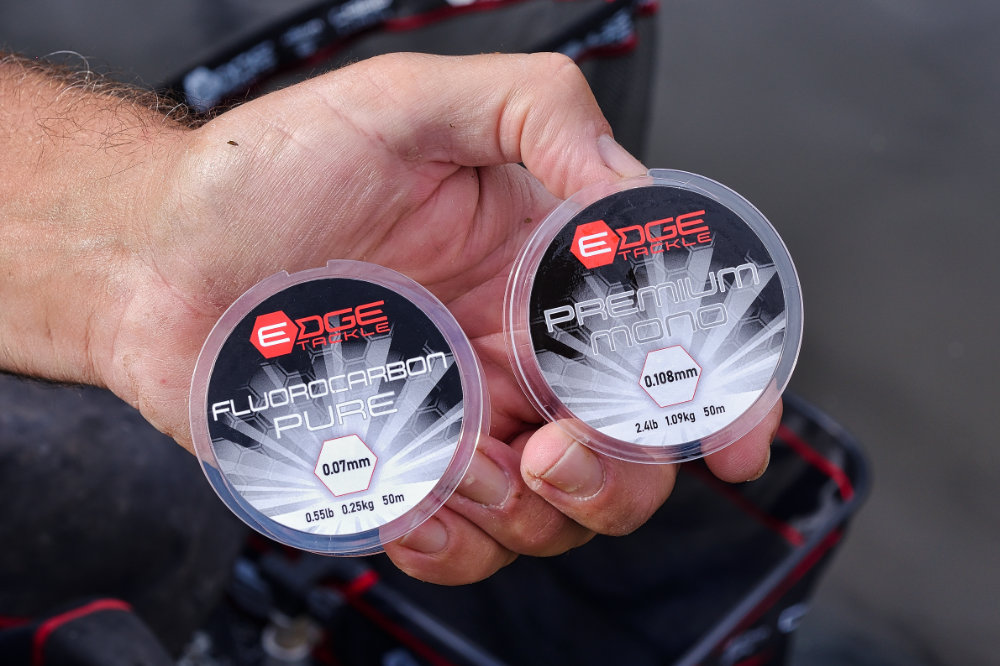
I think it’s important to balance the main line to the hooklengths. So, when fishing finer hooklengths, I don’t like to use a mainline higher than 0.10. If I’m expecting some bonus fish like bream or chub, then I’ll set up a rig with heavier line and hooklength. As a general rule, these are the lines I would consider:
Finesse: 0.10mm mainline – hooklengths 0.06mm-0.09mm
Standard: 0.12mm mainline – hooklengths 0.08mm-0.10mm
Heavy: 0.14mm mainline – hooklengths 0.10mm-0.12mm
It’s amazing what you can land using balanced tackle, and on the Evesham final this year I landed my biggest 3lb chub on the 0.07mm Pure Fluorocarbon hooklength. I’ll admit I was wishing I had a heavier hooklength on when I hooked it, but matched with a soft 5 elastic, I didn’t really have any problems.
Hooks
Typically, I like to use a dedicated fine wire wide gape hook when punch fishing. The wide gape helps when hooking the punch and also holds the punch on the hook longer. A fine wire hook will help present the bread more naturally than a heavier gauge and weight hook. Currently, I tend to use a Gamakatsu (LS1310N) in size 20 and 18 for finesse work or a Hayabusa (CHK-128) when fishing slightly heavier hooklengths. These hooks are also OK with other baits like casters, maggots or pinkies, especially if you hook a perch!
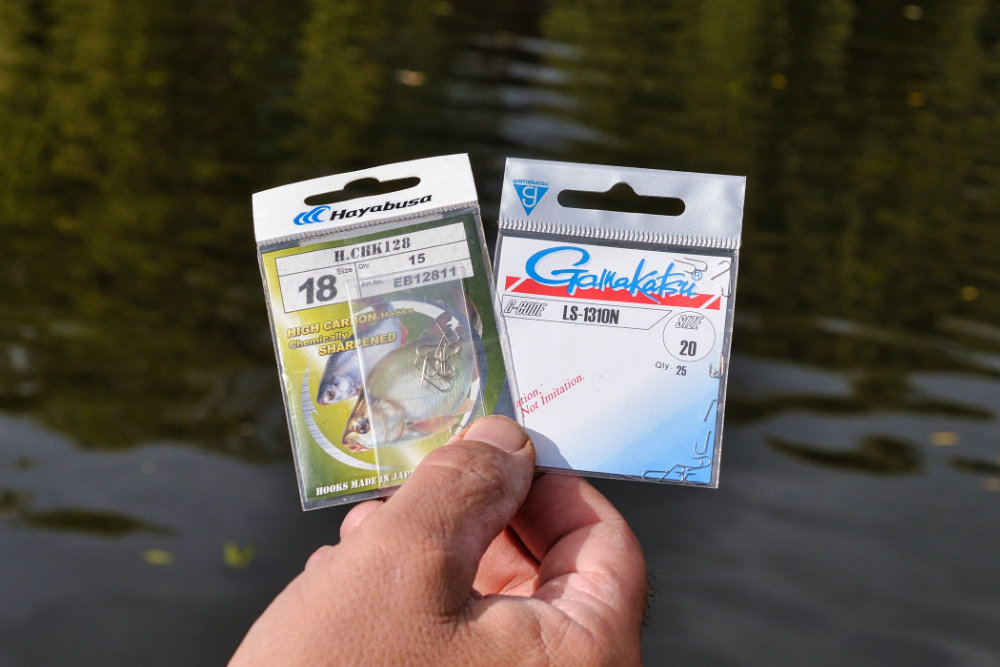
General Tips for Bread Punch Fishing on Rivers
- Don’t feed anything anywhere else in the peg. I just like to start on bread on one line and don’t feed any other lines or baits to start with. Whenever I do, I don’t find the method works as well, I’m quite stubborn about this!
- After the initial start on bread only, I will start to loose feed some hemp or caster just past the bread line. This will help me develop the peg for another bait option later in the match, and also allow me to rest the bread line.
- Topping up with feed is essential. If I feel the peg is starting to fade, then I’ll typically top up with two small balls of bread (one hard and one soft). On good days, topping up is really necessary to keep the fish feeding, and you will often be rewarded with a quick flurry of fish. In this case, I would typically top up every 20 mins or so and risk bigger sized balls. On hard days, topping up is also important, but occasionally the response isn’t immediate. I will top up less frequently, but also with smaller amounts of bread. On harder days, the other baits used with the bread can come into play, later in the match (especially hemp).
- Present the rig carefully into the swim by lowering it slowly into position. Bites typically occur rapidly once the rig has settled, so having the rig under control is essential.
- I like to use a longer line than most when pole fishing on rivers. With bread, I’ll typically use a top 5. It enables me to search around the feed area and also keep the pole tip away from the fish.
- Sometimes slowing the rig down is very effective. To do this properly, I like to overshot the float slightly with number 8 shot. The amount I overshot the rig will depend on the flow and depth of the peg (only needed 2 x no8 today, have used up to a BB in pacier pegs). It’s important to fish over depth as well (up to 20cm) and this form of presentation really can make a difference, especially on hard days or when targeting bigger fish.
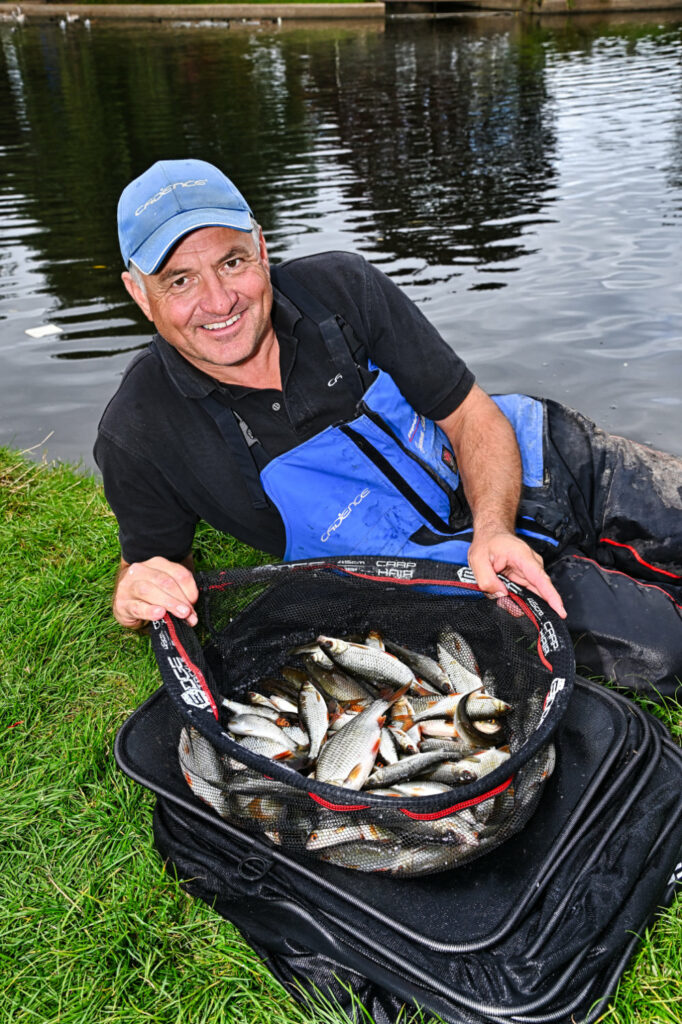
I hope that helps!? What started as a bait to avoid blanks on the toughest of day, bread punch has now become one of my favourite and most productive methods when pole fishing on rivers.

